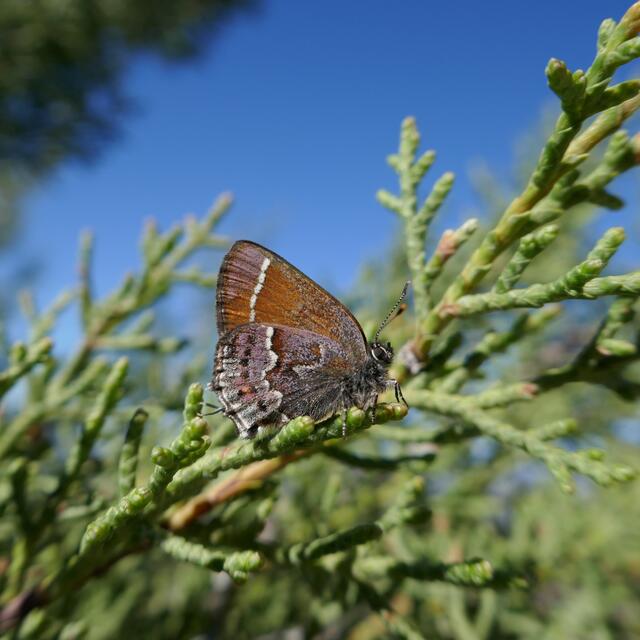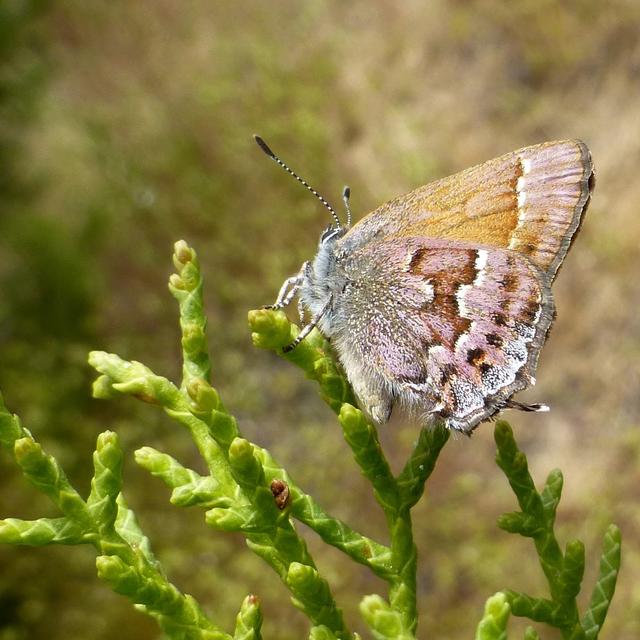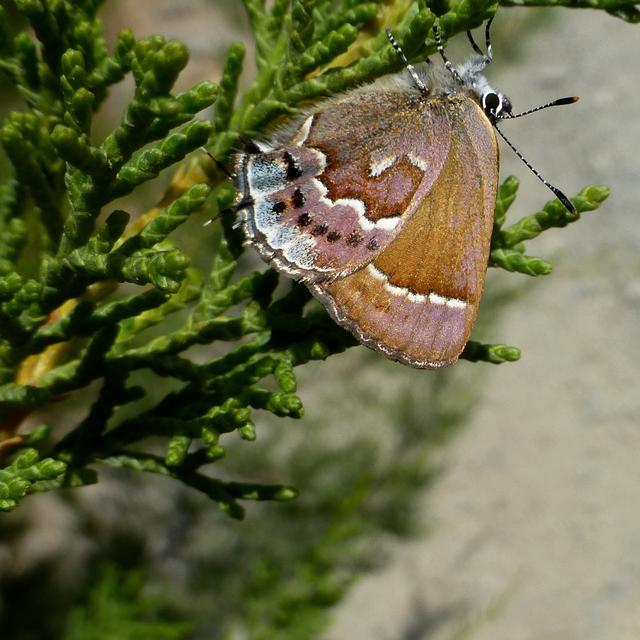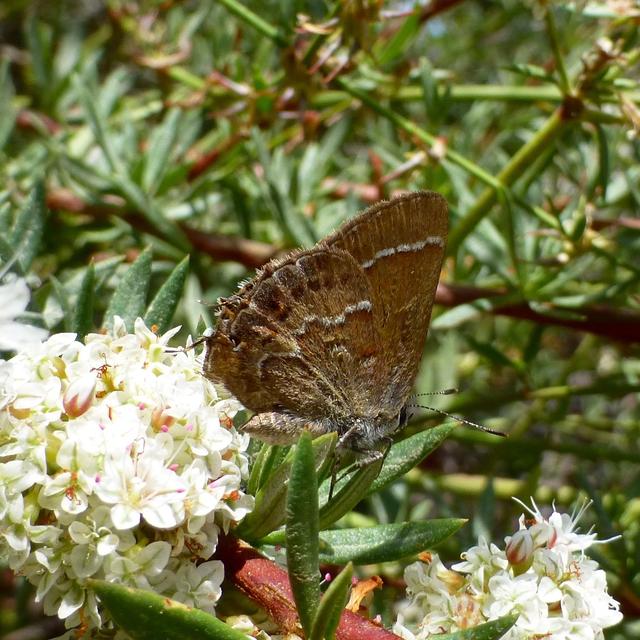Thorne's Juniper
Callophrys thornei (J.W. Brown, 1983)
Family: Lycaenidae
Subfamily: Theclinae
Identification: Upperside of male is dark brown with dark orange patches on lower outer edges of wings; female is tawny with dark margins. Underside is dark purple-brown with an iridescent green sheen. Postmedian line is very irregular; dark toward the base of wing, white toward the outer margin. Blue-gray patch near hindwing margin contains 3-4 reddish spots; 3-4 small black spots are near this patch.
Wing Span: 7/8 - 1 inch (2.2 - 2.5 cm).
Life History: To seek females, males perch on host trees all day. Eggs are laid singly on tips of host plant leaves, which the caterpillars eat. Chrysalids hibernate.
Flight: One brood from April-May.
Caterpillar Hosts: Tecate Cypress (Cupressus).
Adult Food: Nectar from flowers of wild lilac (Ceanothus) and other plants.
Habitat: Hilly, rocky areas.
Range: Small population in San Diego County, California.
Conservation: Because of its small range and susceptibility to fire, this butterfly is of a high conservation priority.
NCGR: T1 - Critically imperiled because of extreme rarity (5 or fewer occurrences, or very few remaining individuals), or because of some factor of its biology making it especially vulnerable to extinction. (Critically endangered throughout its range).
Management Needs: Inventory and monitor population, manage fire as carefully as possible..
Comments: NULL
Please donate!
We depend on donations to keep Butterflies and Moths of North America freely available. We want to express our gratitude to all who showed their support by making a contribution this year. You can donate to support this project at any time.
Advertise with us!
Do you have a product or service that you think would interest BAMONA users? If you would like to advertise on this website, contact us by email, or use the contact form and select the "Advertising" category.
Verified Sightings
Displaying 1 - 10 of 10 verified sightings

Observation date: Feb 12, 2022
Submitted by: Robert Gorman
Region: San Diego County, California, United States
Verified by: Ken Davenport
Verified date: Jun 10, 2023

Observation date: Feb 12, 2022
Submitted by: Robert Gorman
Region: San Diego County, California, United States
Verified by: Ken Davenport
Verified date: Jun 10, 2023

Observation date: Jun 10, 2017
Submitted by: Robert Gorman
Region: San Diego County, California, United States
Verified by: Ken Davenport
Verified date: Jun 12, 2017

Observation date: Jun 10, 2017
Submitted by: Robert Gorman
Region: San Diego County, California, United States
Verified by: Ken Davenport
Verified date: Jun 12, 2017

Observation date: Jun 10, 2017
Submitted by: Robert Gorman
Region: San Diego County, California, United States
Verified by: Ken Davenport
Verified date: Jun 11, 2017

Observation date: Jun 10, 2017
Submitted by: Robert Gorman
Region: San Diego County, California, United States
Verified by: Ken Davenport
Verified date: Jun 11, 2017
Observation date: Jul 15, 2010
Submitted by: legacy.reporter (Michael Klein)
Region: San Diego County, California, United States
Verified by: Ken Davenport (Ken Davenport)
Verified date: Jan 01, 2012
Observation date: Jan 26, 2011
Submitted by: legacy.reporter (Michael Klein)
Region: San Diego County, California, United States
Verified by: Ken Davenport (Ken Davenport)
Verified date: Jan 01, 2012
Observation date: Mar 27, 1996
Submitted by: legacy.reporter (Jack Levy)
Region: San Diego County, California, United States
Verified by: Ken Davenport (Ken Davenport)
Verified date: Jan 05, 2010
Observation date: Oct 28, 1979
Submitted by: legacy.reporter (J. W. Brown)
Region: San Diego County, California, United States
Verified by: Ken Davenport (Ken Davenport)
Verified date: Oct 16, 2009


